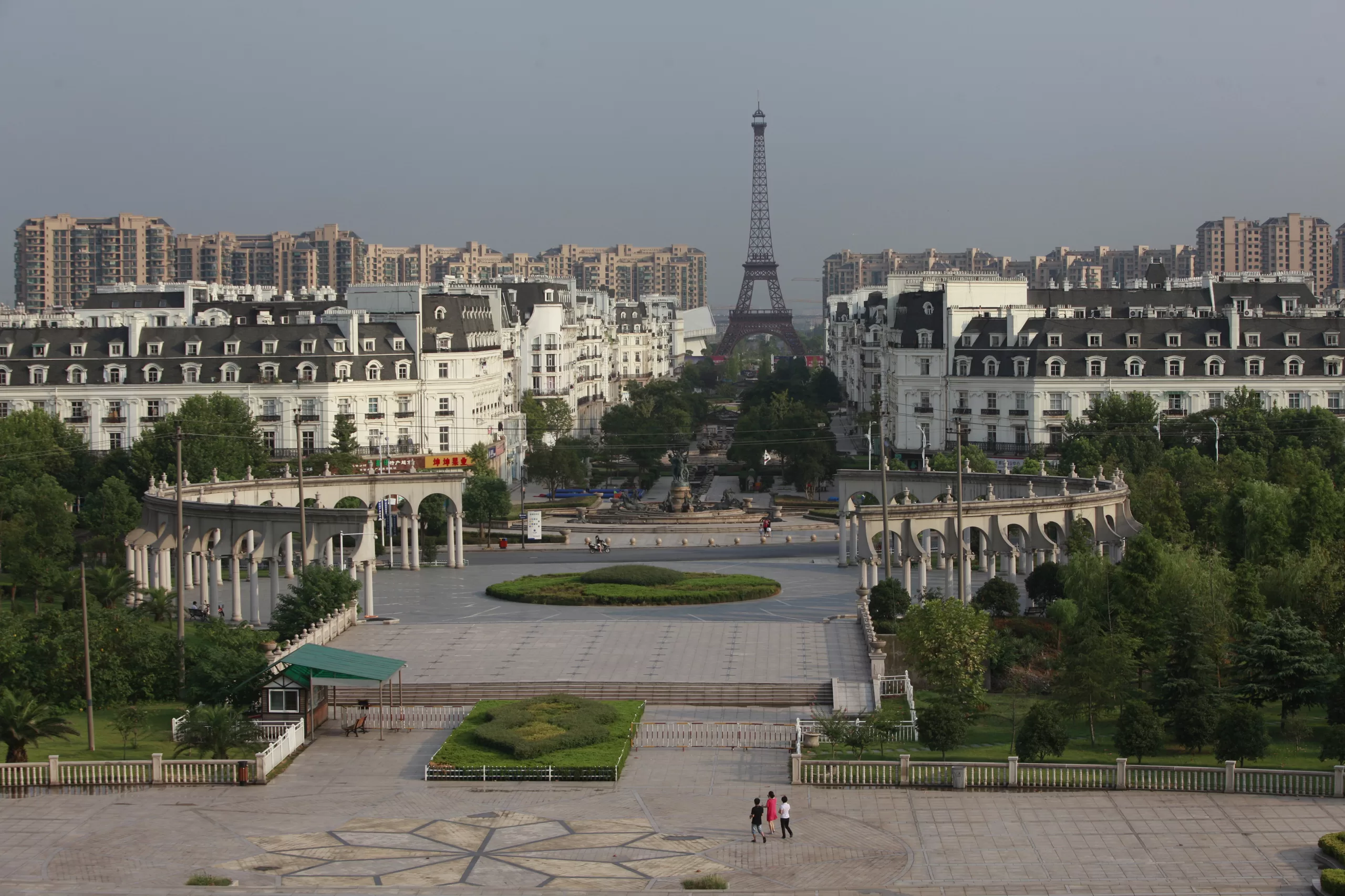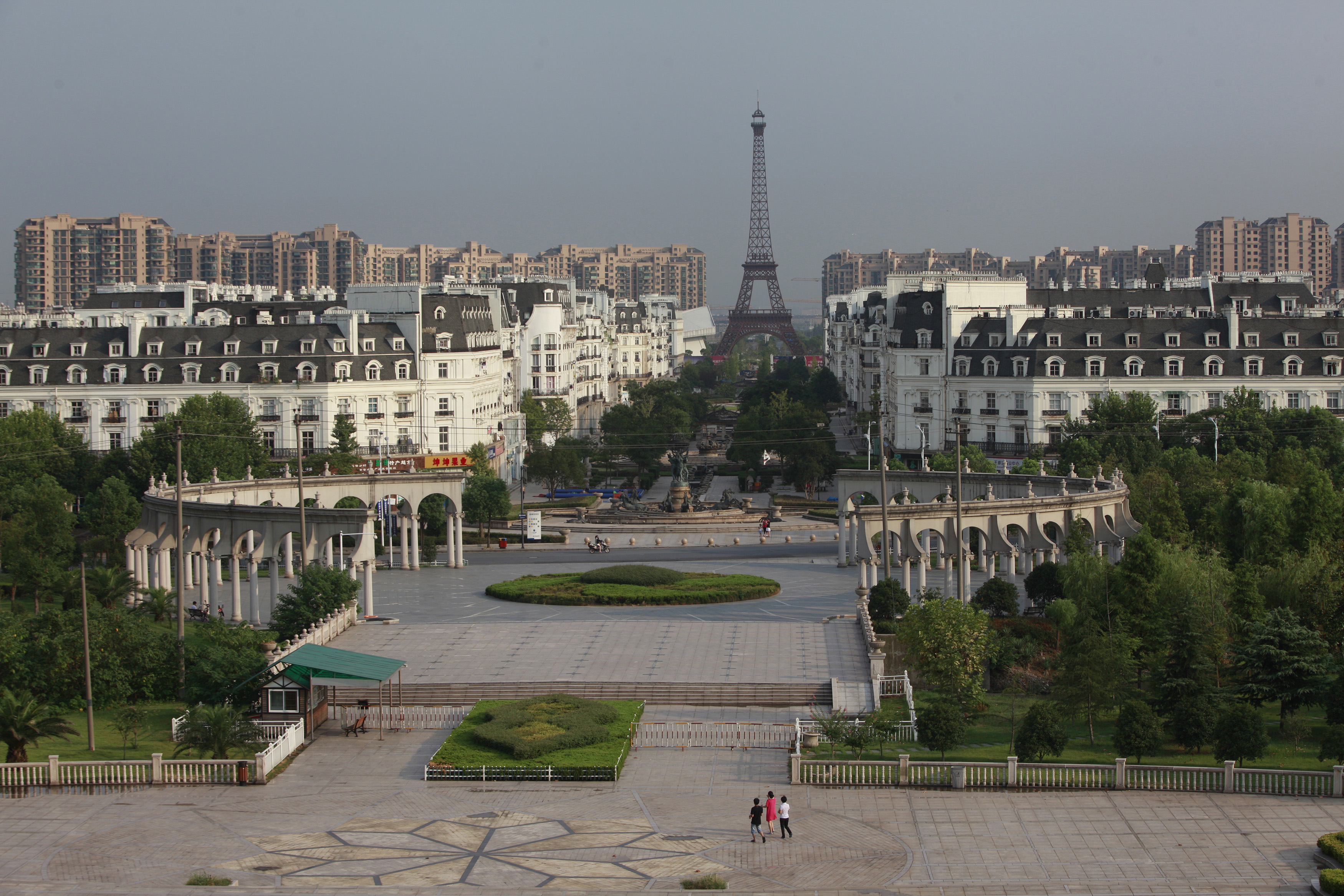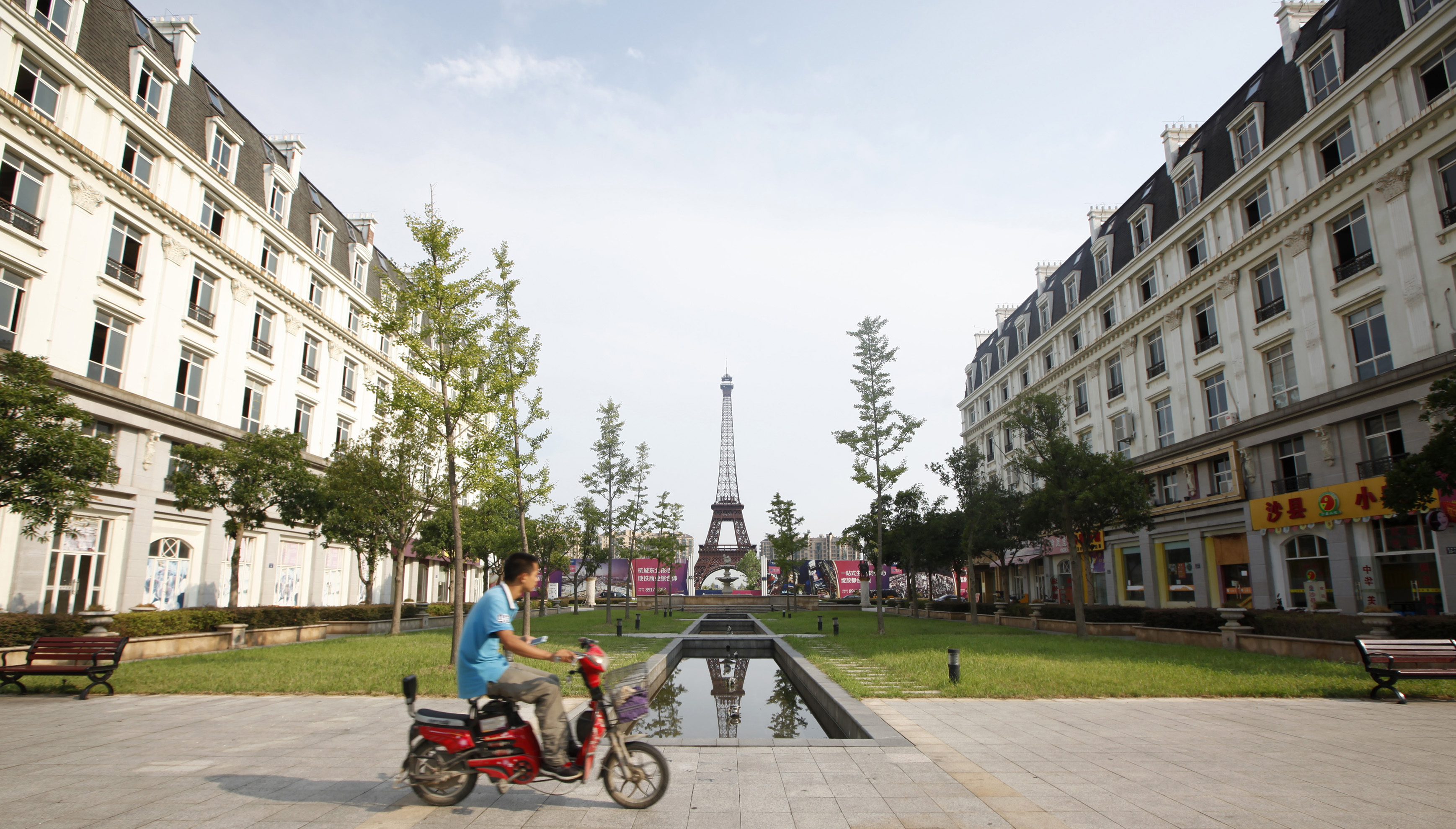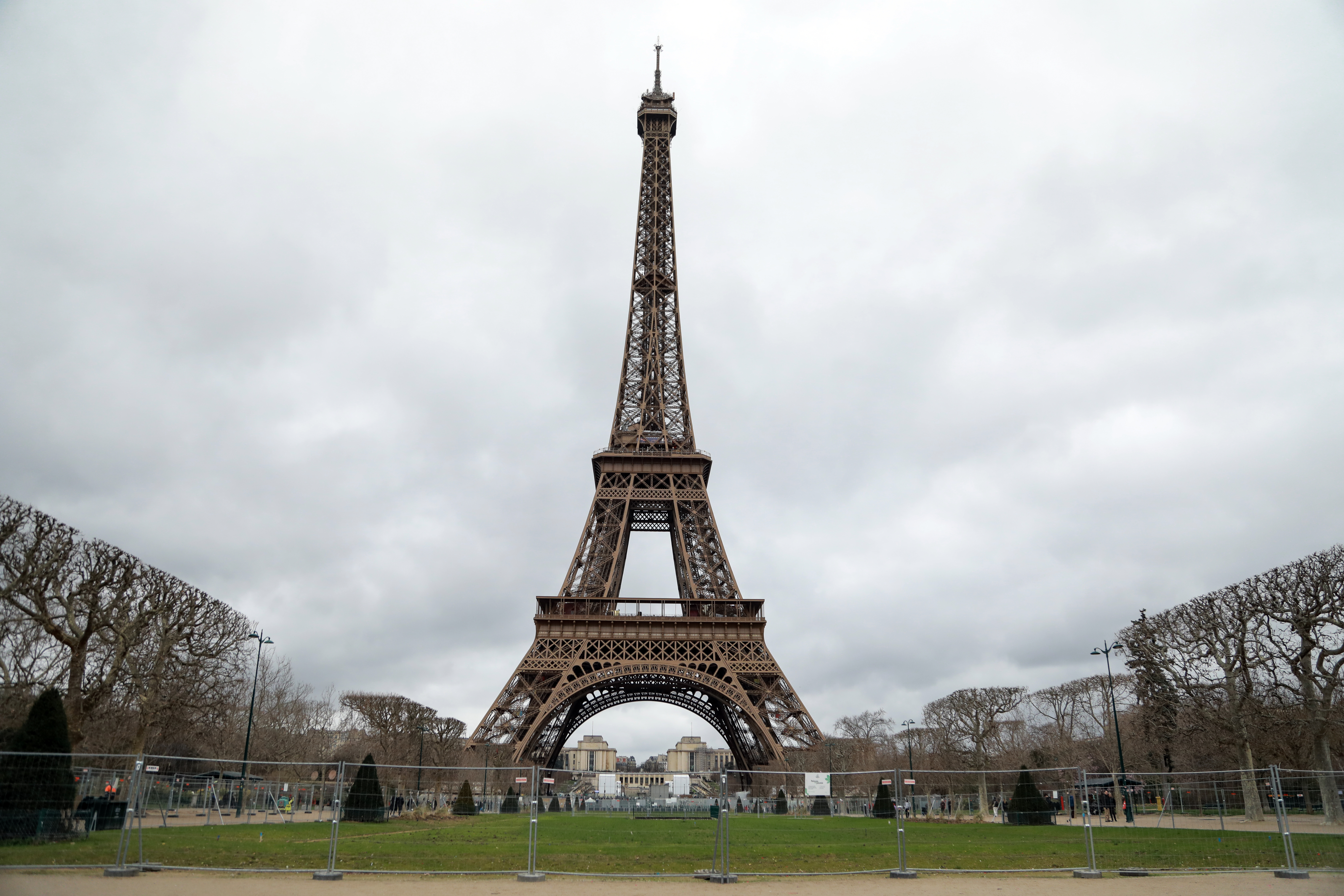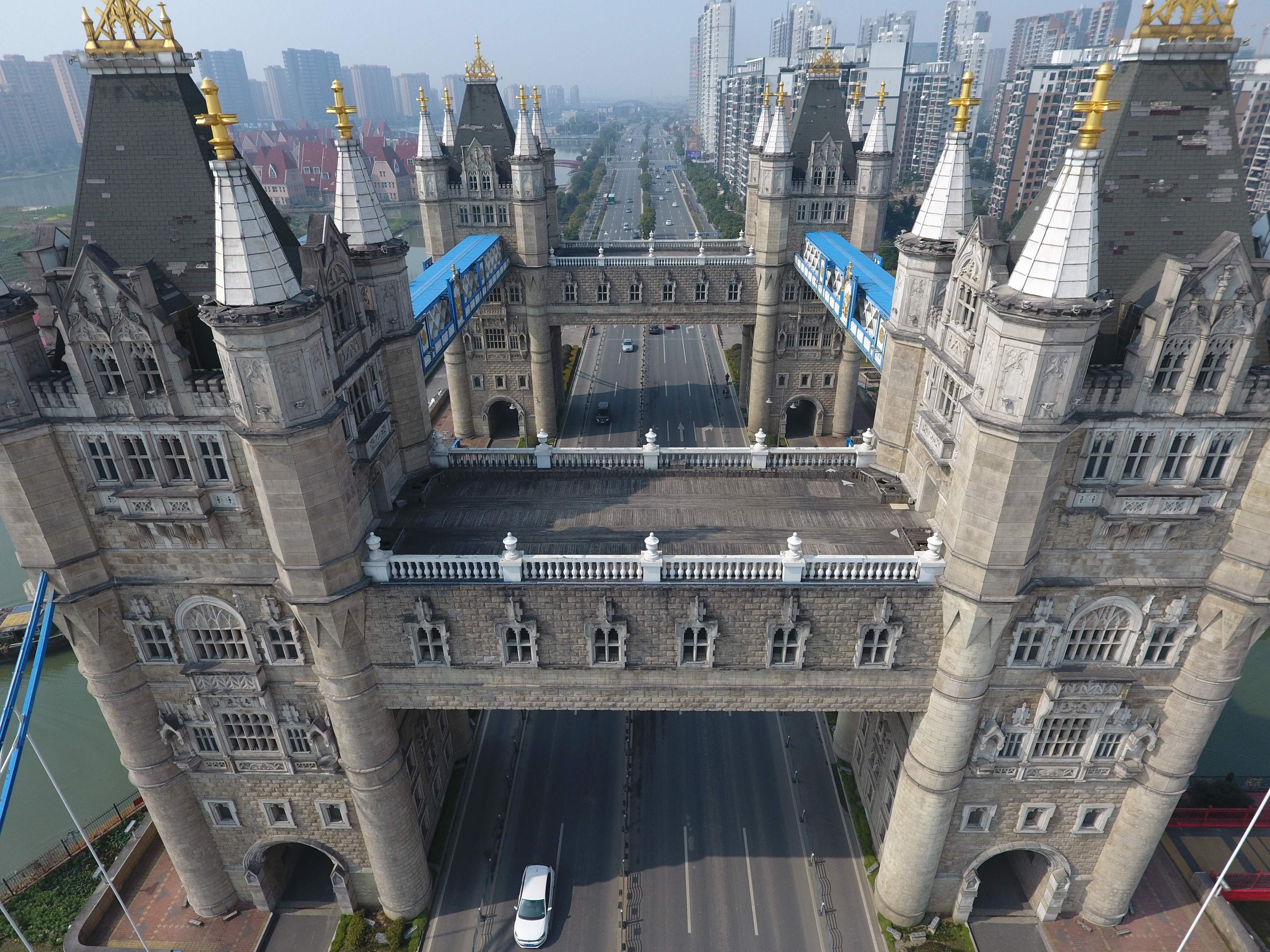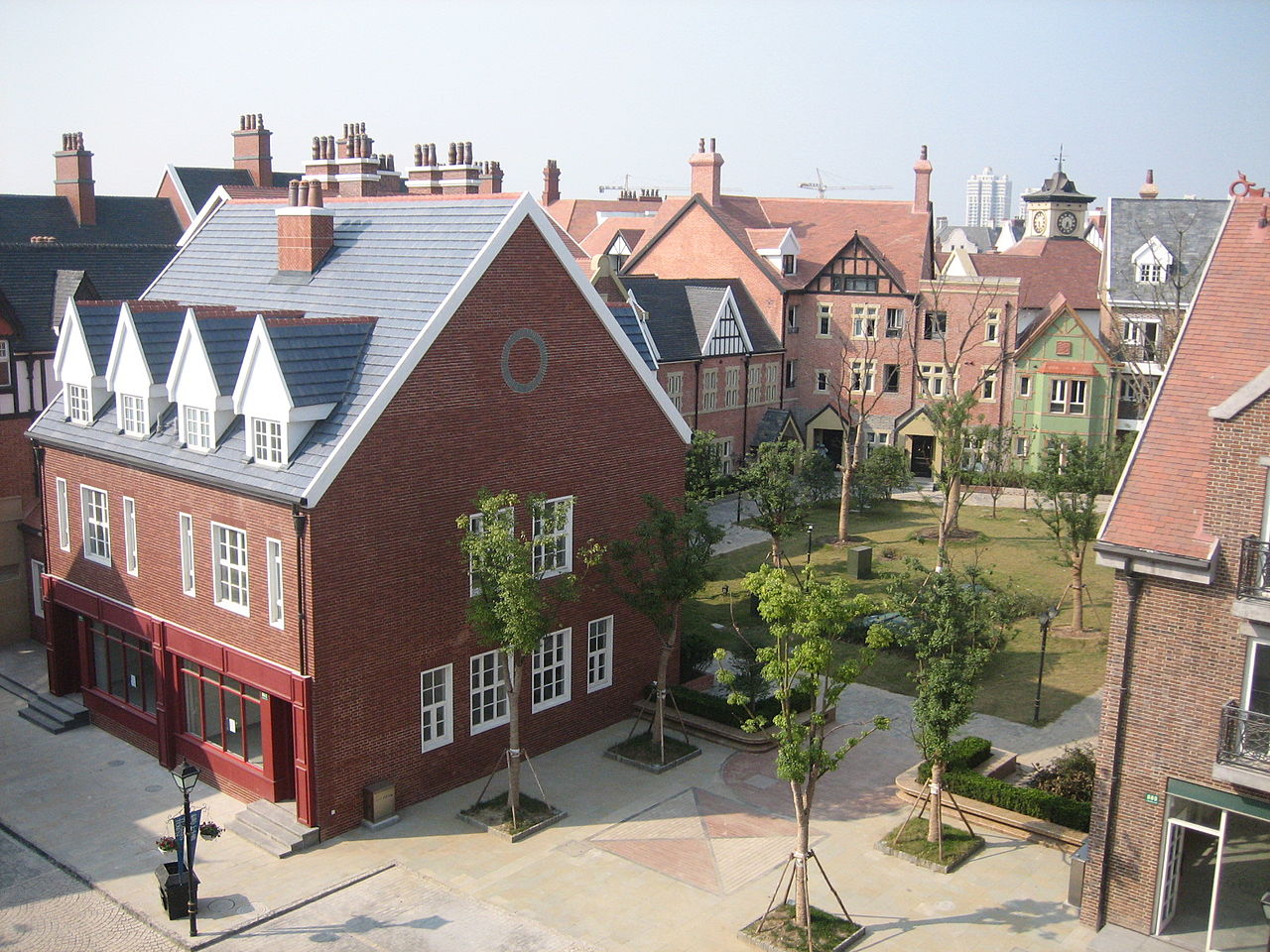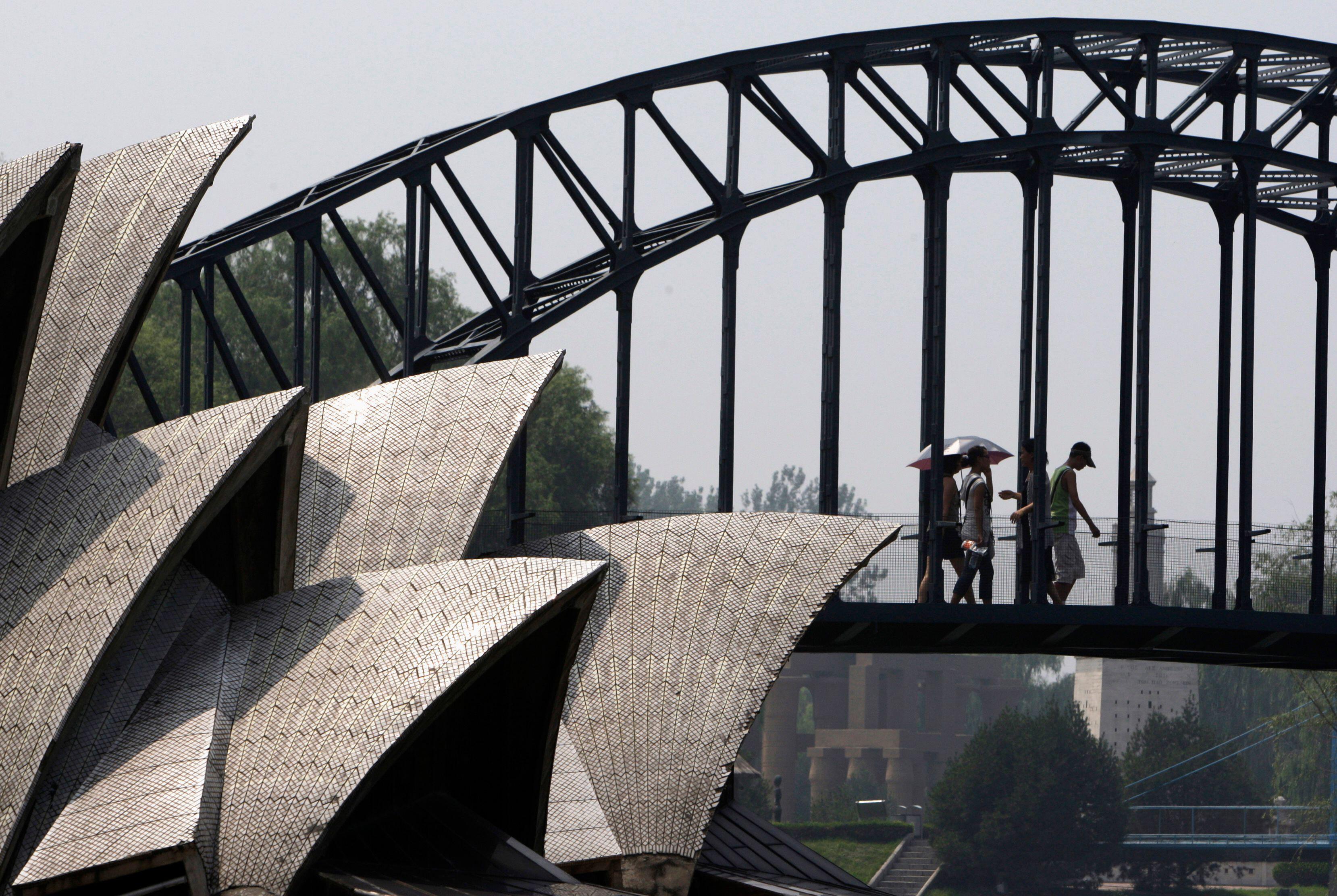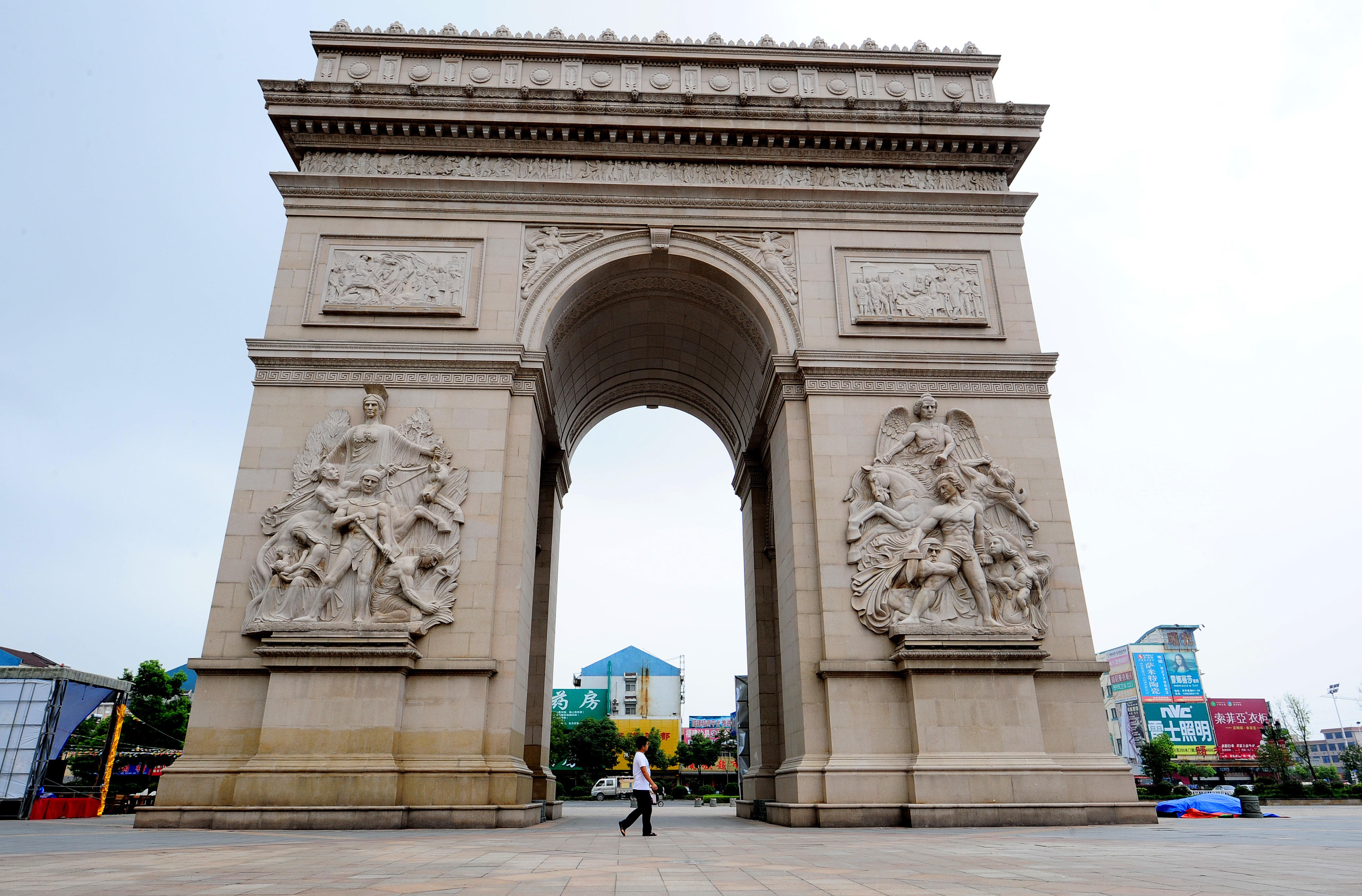Tianducheng even boasts Parisian walkways, cafes, parks and signage.
But for years the gaudy mimic was all but a ghost town, with just 2,000 residents calling it their maison.
The luxury real estate development opened in 2007 following a massive £1 billion construction project.
Its copy-cat Eiffel Tower is 729 feet shorter than the French original, standing just 107 metres tall.
While an imitation of the Champs-Élysées avenue was named Xiangxie Road before being switched back to the French name.
Developers even gave Tianducheng it’s own Palace of Versailles gardens with geometric planting and fountains.
And with streets upon streets of Parisian-style housing, you’d be forgiven if you confused the clone with the French capital.
But despite all of this, the mock City of Lovers failed to get anyone to fall head over heels for it.
This was partly due to its hard-to-reach location in rural Zhejiang province.
Incredibly, between 2007 and 2013, only around 2,000 people lived in a town built for 10,000.
But as the Haussmann-style homes remained vacant the eerie town attracted throngs of tourists.
These included newlyweds looking for a picture-perfect backdrop to their wedding pictures.
However by 2017 word had got around about the European wannabe and it boasted 30,000 residents.
Incredibly, the Eiffel Tower in Tianducheng is not China’s only dupe on the famous French tower.
There’s also a 108 metre tall one in the southern city of Shenzhen, which borders Hong Kong.
It is one of dozens of bizarre “fake” landmarks China has built during its “duplitecture” obsession.
Other weirdness includes a dupe of London’s Tower Bridge, Alpine villages and even the Sydney Opera House.
Bianca Bosker, whose written about China’s mimic towns, told Nat Geo in 2018: “Entire townships and villages appear to have been airlifted from their historical and geographical foundations in England, France, Greece, the United States and Canada.”
